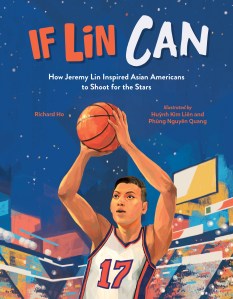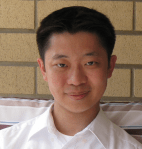It seems so simple.
We were all children, once upon a time. That means writing a children’s book should be a piece of cake. All we need to do is think like the kid we used to be. Right?
Right?
Oh, if only.
The reality, of course, is far more complex. For one thing, thinking like a kid is easier said than done. As an adult, reaching the long-lost child within requires digging through layers upon layers of accumulated life experiences. Thankfully, most of these experiences have been positive. But the truth is that life, no matter how well-lived, can have a dulling effect on our outlook. The older we get, the further removed we are from the shiny bright-eyed optimism of childhood—a time when hopes and dreams were yet unburdened by the bumps and bruises of “real life.” Reclaiming that magic is no simple feat.
For me, the first step is to remember the “wow” factor. When I was young, what fired up my imagination? What spectacle inspired sheer awe? What mind-blowing event made me blurt out, “This is the coolest thing ever!” with complete earnestness and sincerity?
When I first sat down to write If Lin Can, identifying the “wow” was easy. Asian American basketball player Jeremy Lin’s incredible rise from little-known benchwarmer to global superstar—an unforgettable two-week stretch known as Linsanity—was the stuff of childhood fantasy. I grew up dreaming of hitting game-winning shots at Madison Square Garden for my hometown Knicks. To watch someone named Lin living out that dream? What could be better for a sports-loving Chinese kid from New York?
There was just one problem: when Linsanity happened, I wasn’t a kid.
In 2012, I was already in my 30s. And as thrilling as it was to witness Lin’s story as an adult, I knew in my heart that it would have been life-changing for me as a five-year-old. That realization drove my decision to frame the book primarily around the perspective of three Asian American children, rather than Lin himself.
There were other reasons to depart from the typical biography structure. Some of my favorite picture book bios take the tried-and-true approach of focusing on the subject’s childhood—The Iridescence of Birds: A Book About Henri Matisse by Patricia MacLachlan and Hadley Hooper, and John Ronald’s Dragons: The Story of J. R. R. Tolkien by Caroline McAlister and Eliza Wheeler are two wonderful examples. The idea is to show kids that even famous painters and authors were once kids themselves.
But unlike Matisse and Tolkien, who each achieved iconic status through a body of work that was methodically built up over the course of many years, Lin’s story was different. The uniqueness of Linsanity was that it came out of nowhere, and fast. So while Lin’s early years are certainly important and deserving of consideration, the focus for If Lin Can clearly had to be those two weeks that transformed his life and career—and their impact on young Asian fans who suddenly had a hero of their own.
With that in mind, the challenge was to place myself in the shoes of those Asian kids who breathlessly watched every play, and to imagine how I would have reacted. To remember the insecurities and doubts I grappled with growing up, and to capture the excitement and pride and unbridled joy of seeing that negativity overcome by someone who looks like me. The three kids at the heart of If Lin Can are me, and they are the eyes and ears of every reader—Asian and non-Asian, young and old, rabid sports fan and basketball novice—who are transported through this book to a moment in time that can only be described in one word:
Wow.
As a child, Richard Ho harbored perfectly reasonable career aspirations: professional basketball player, astrophysicist, and Jedi master. As a grown-up, he gets to live out some of these dreams through his work as an author. His acclaimed picture books include Two New Years, illustrated by Lynn Scurfield, and The Lost Package, illustrated by Jessica Lanan. Richard lives with his family in New Jersey, where he sometimes still daydreams about playing for the New York Knicks. You can follow him on X (@richkarho), Instagram (@richkarho), and his website.
Giveaway Information:
You can win a copy of IF LIN CAN by Richard Ho, donated by Charlesbridge. To enter the giveaway, leave a comment about this post by Saturday, April 27 at 6:00 p.m. EDT. The winner will be randomly selected by Stacey Shubitz and announced at the bottom of the post by Thursday, May 2. You must have a U.S. or Canadian mailing address and provide a valid e-mail address when you post your comment. If you win, Stacey will email you for your mailing address. We will choose a new winner if you do not respond with your mailing address within five days.
4/27 @ 8:50 p.m.: The giveaway is now closed.
Many thanks to everyone who left a comment. Debbie Robl’s commenter number was drawn, so she’ll win a copy of If Lin Can.





Life can have a dulling effect on our outlook. Yikes! If you are blessed enough to have grandchildren, they can reintroduce you to so much and shine up your outlook! This book should be a hit with sport loving students!
LikeLike
The idea of being “transported through this book to a moment in time” is the ultimate gift of reading.
LikeLike
Thanks so much, Richard, for sharing the thinking behind your book, If Lin Can. I am excited to add it to my picture book biography basket. I know this book could be a mirror for some of my students and a window for others. I did not know about Jeremy Lin and I am looking forward to learning more about him through your book!
LikeLike
I really enjoyed reading about the process you used to determine the point of view of this biography. It’s not always easy to come up with a new spin on a biography but it seems as if you have by telling Jeremy Lin’s story through the eyes of his inspired fans. I remember Linsanity very well, and I think it’s a great way to frame his story. I look forward to reading your book!
LikeLike
I’m so intrigued by this biography–I’m not sure I’ve read a biography for kids that focuses on other people seeing that person achieve. It sounds like it will be a good mentor text for showing kids the variety of structures writers can use. I also appreciate the advice to look for the “wow”. That feels like a great way to brainstorm writing topics.
LikeLiked by 1 person
This was very interesting with some great ideas-and I love this line, “childhood—a time when hopes and dreams were yet unburdened by the bumps and bruises of “real life.”
LikeLike
remembering what wowed you as a child is great advice. But what startled me here was the idea of writing a biography from the pov of a child, either the famous person as a child, as in your examples, or a child as a fan. I’ll be considering this idea a lot! Thank you for encouraging us to regain our childlike enthusiasms.
LikeLike
I appreciated hearing about how hard it is to write a children’s book. Getting that wow! Thank you!
LikeLike